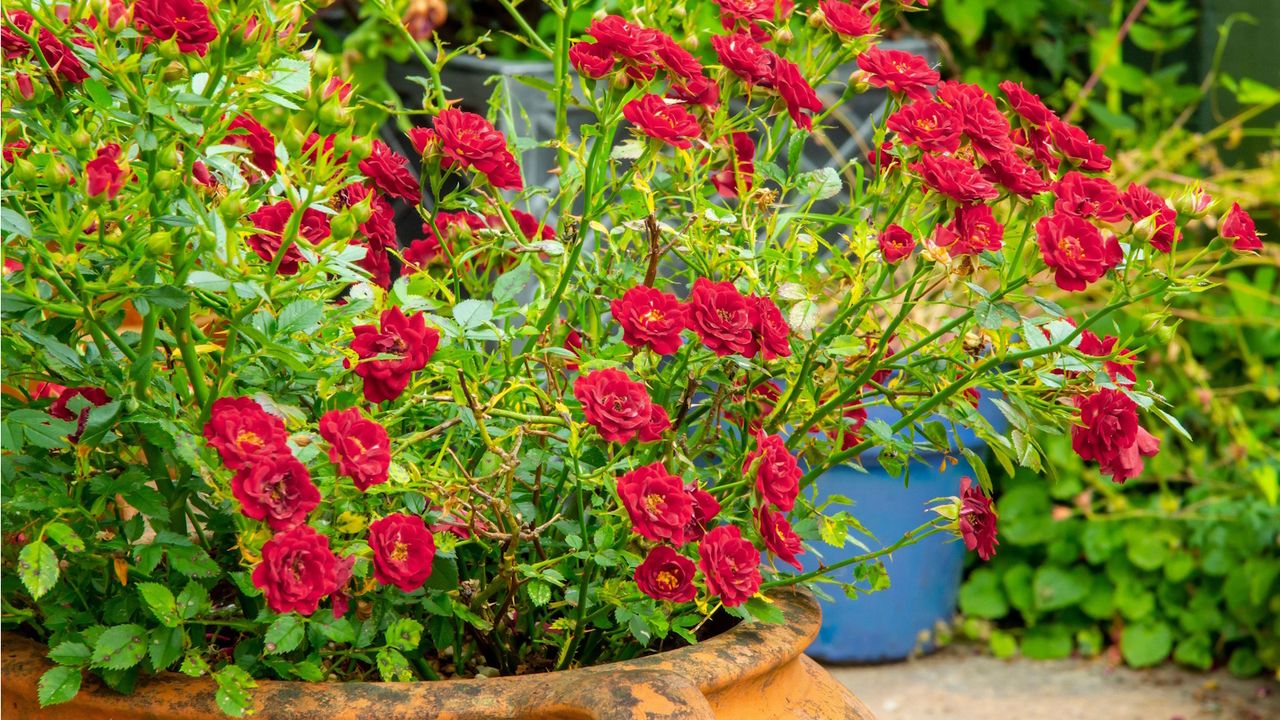
I was recently gifted a mini rose plant and while I love having it on my kitchen windowsill, the thought of having it in my garden, alongside my other roses, did cross my mind. But, then I thought, can I actually grow a mini rose plant outdoors?
After doing some research, I was delighted to learn you can grow a mini rose plant outdoors. But, it isn't as simple as just placing it outside. It turns out you need to do a few things to ensure it is acclimatized before growing your rose in your garden.
It's also easy to make a few rose growing mistakes with mini rose plants, so it's important to take the time to first understand how to grow it outdoors correctly. To help you out, I've put together a guide on how to grow a mini rose plant outdoors with the steps I'm following to ensure it's a success.
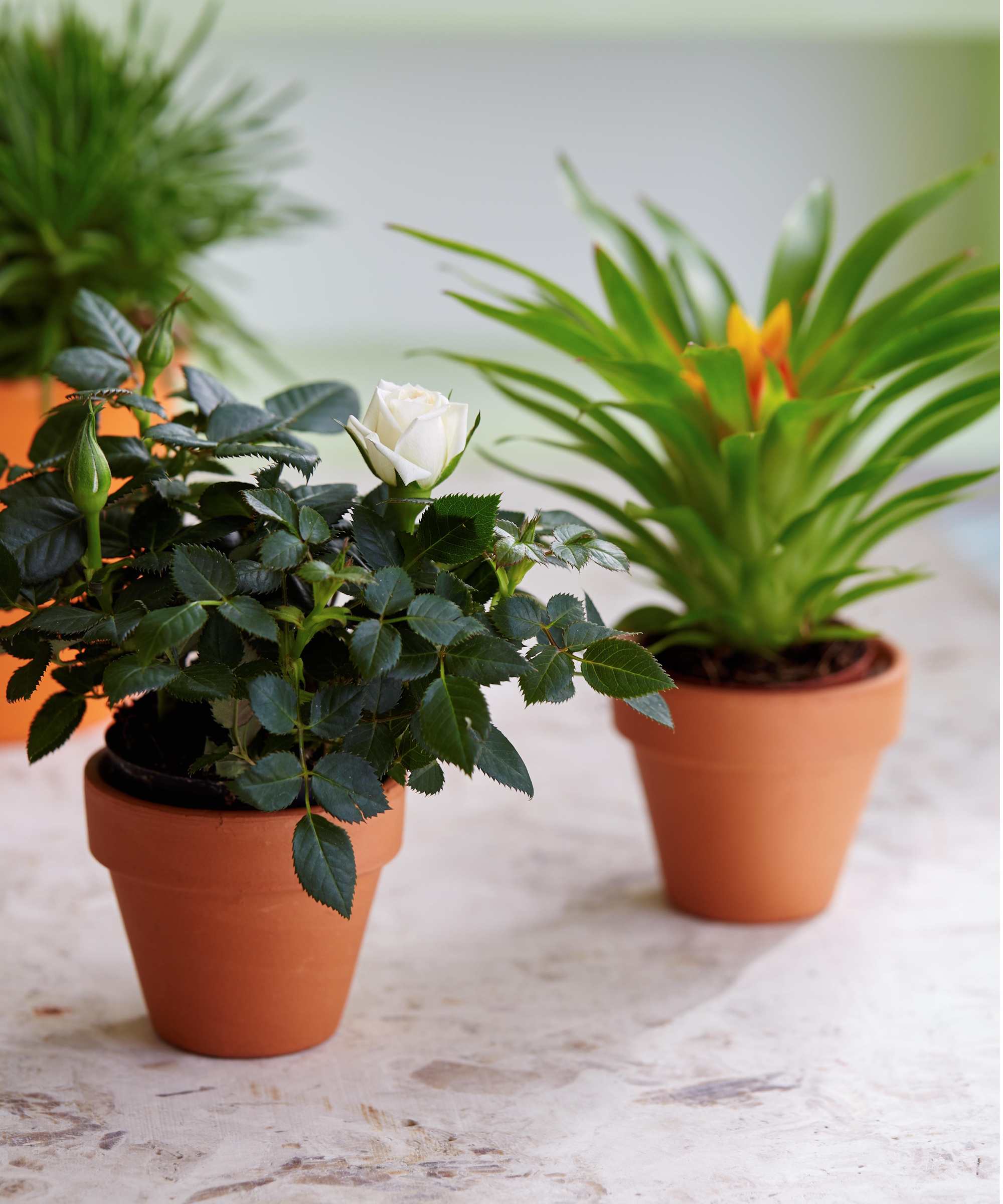
How to grow a mini rose plant outdoors
Miniature rose plants are often intended to be indoor plants, usually bought from supermarkets or florists. Just like florist hydrangeas, these plants are usually forced to bloom or are grown from cuttings with weaker root systems.
This means transitioning them outdoors into a colder climate could shock them, stunt growth, or even kill them off. But, it isn't impossible to grow a mini rose plant outdoors. You just need to follow a few simple steps.
Something to be aware of, however, is that not all climates will be able to support a mini rose plant. They will do best across US hardiness zones 4 to zone 11, and will need winterizing to survive frosty winters.
1. Acclimatize your mini rose plant
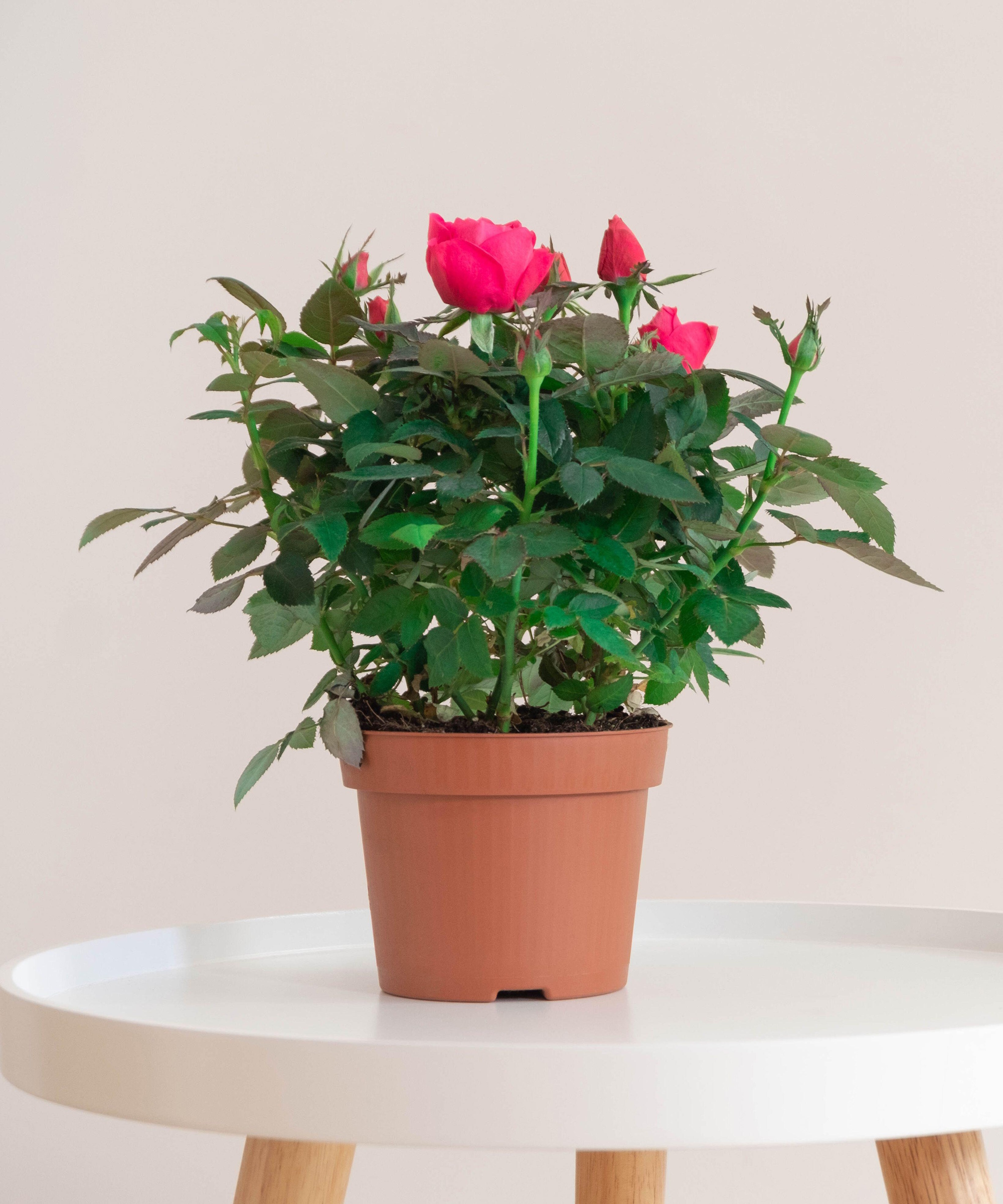
Just like many of the easiest houseplants to grow outdoors, a mini rose plant needs acclimatizing to ensure it adapts to the temperatures, light, and wind of outdoor conditions.
To do this, I have gradually exposed my mini rose plant to increased sunlight (as it's blocked from sun indoors) by placing it in my yard.
First, I put it in a shaded, sheltered spot for a few hours of the day. When intense afternoon sunlight came out, I moved my mini rose plant back indoors, as to not cause leaf scorch or shock it.
Every few days, I moved my mini rose plant to a slightly sunnier spot for a longer amount of time.
While doing this, I monitored for any signs of stress, such as my rose leaves turning yellow or wilting. If your mini rose plant does show stress, move it back indoors to recover. You can prune your rose with these micro pruning snips from Amazon to remove any damaged leaves or blooms.
After several weeks have passed and your mini rose plant is showing signs of being happy and healthy outdoors, you can move it to its final spot.
These plants aren't likely to grow as big as rose shrubs or climbing roses, so it makes sense to continue growing it in a container garden, although you can also add it to a garden border.
2. Provide plenty of sunlight
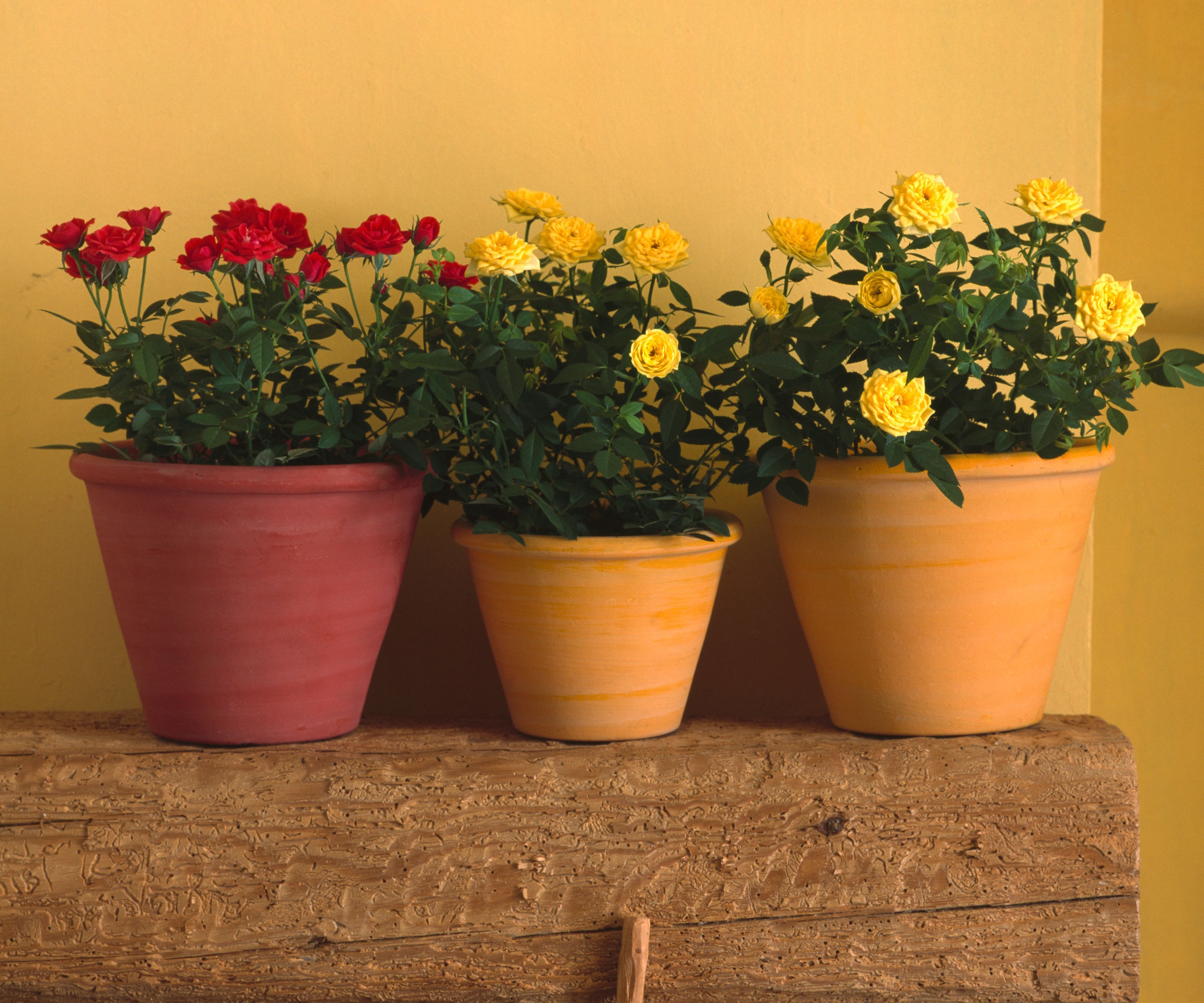
Wherever you do decide to grow a mini rose plant outdoors, make sure it's a sunny spot. Just like regular roses, mini rose plants are sun-lovers, so they're less likely to perform well if you grow this rose in shade.
Aim to place it somewhere it will get at least six hours of direct sun a day and you'll watch it rebloom through the summer months.
If you're struggling to find a sunny spot in your yard, however, consider pruning tree branches that are casting shade. You might need essential pruning tools to do this, like these loppers from Amazon.
3. Water your mini rose plant deeply
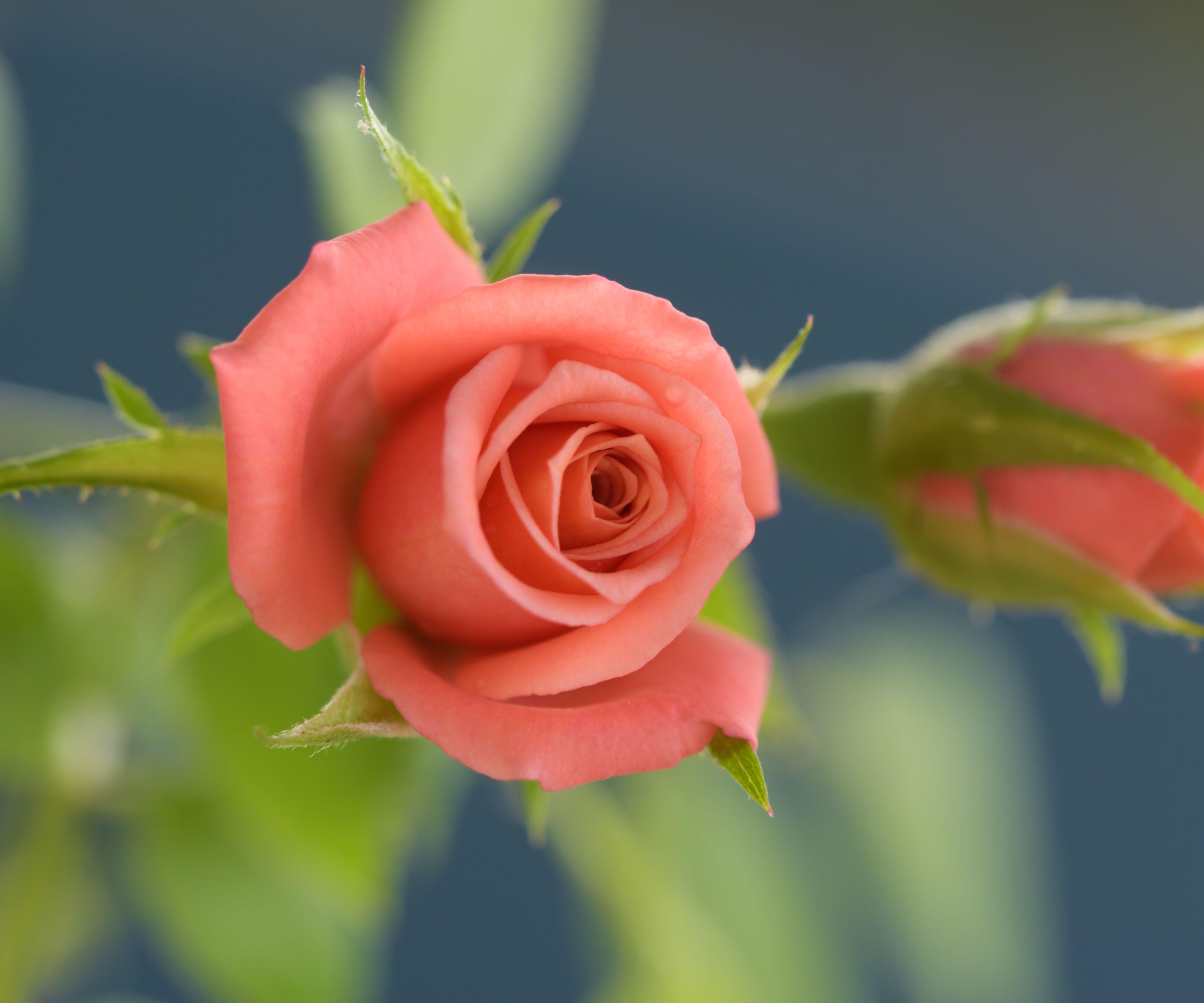
It's also important to water your rose correctly to help it settle in to an outdoor environment. This means maintaining consistent moisture levels for your mini rose.
To avoid root rot and other rose diseases, it's best to water your rose deeply and less frequently. This will help encourage a stronger, deeper root system and reduce the likelihood of waterlogged soil.
At the same time, you should take care not to overwater your mini rose plant. I personally use this soil moisture meter from Amazon to check when my plants need watering and avoid watering mistakes.
FAQs
Should I fertilize my mini rose plant?
Yes, it's a good idea to fertilize your rose, even if it is a mini indoor plant. Roses are heavy feeders and fertilizing (with a rose fertilizer from Amazon) provides the essential plant nutrients needed for longer blooming and more profuse flowers. You should, however, only fertilize your mini rose plant when it is actively growing in spring and summer, to avoid roots burning and oversaturating soil.
Don't forget to winterize your mini rose plant when the colder seasons come round. I'm leaving mine growing in a pot, so plan to just bring it under cover for the winter, but you can also use frost cloths (from Amazon) or mulch to protect it from freezing temperatures.







